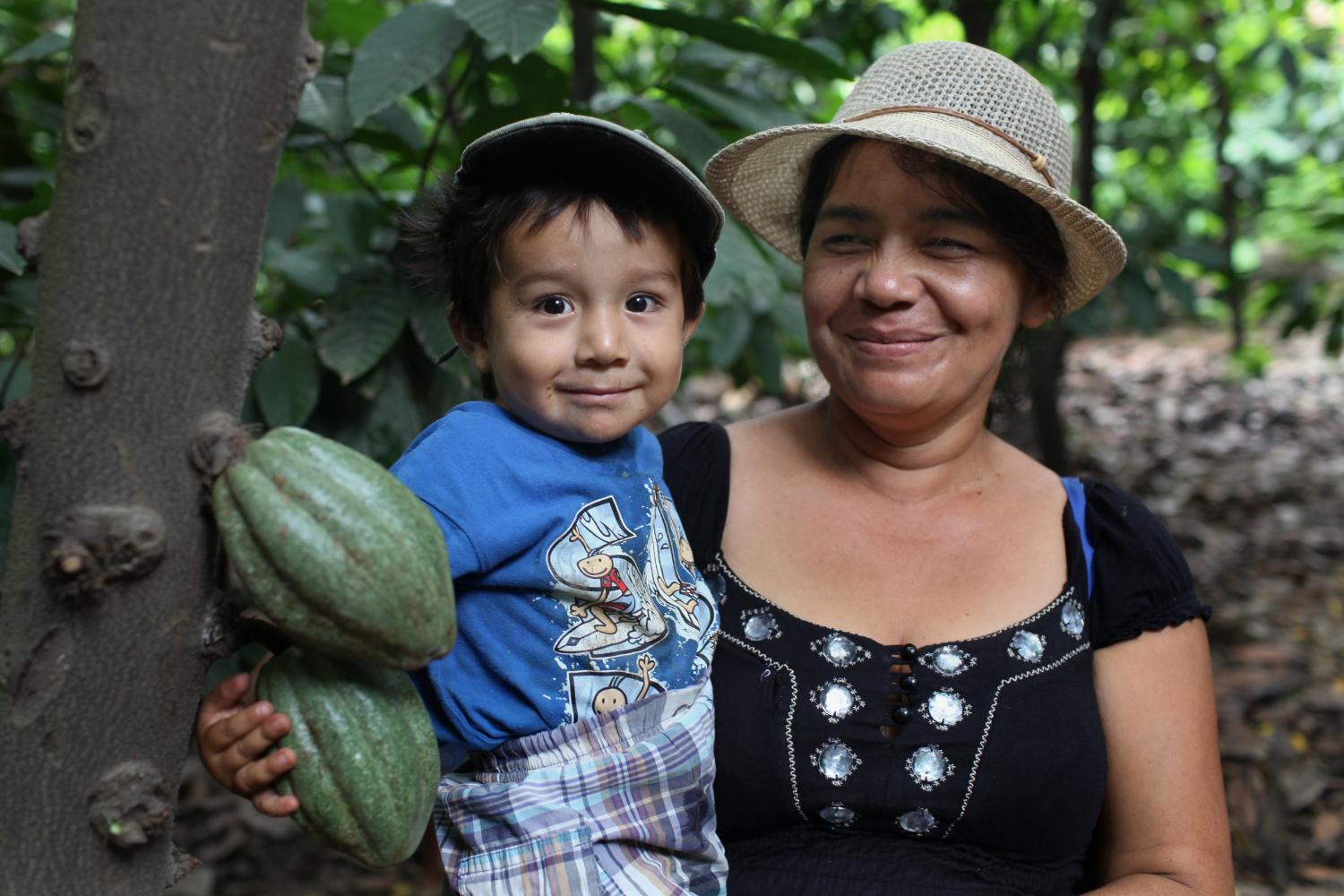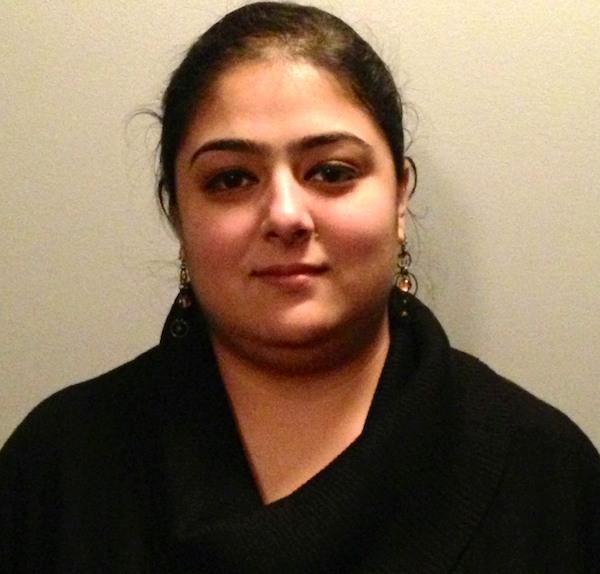New Partnership Aims to Put a Hero In Every Teapot


If you've never heard the phrase "hero crop" before, you will soon. Relatively new to the lexicon, hero crop refers to sustainable crops that fulfill social benefit goals for the communities that grow them. That will include tea, if the global non-profit organization Forum for the Future has anything to say about it.
Forum for the Future has just launched a new initiative called "The Future of Tea - A Hero Crop for 2030" with several of the seven companies responsible for 90 percent of the global tea market (yes, only seven). The group encompasses at least three brands familiar to U.S. tea drinkers: Lipton (parent company Unilever), Tetley (parent company Tata Global Beverages), and Twinings. A fourth company, Finlays, is a leading tea trader, manufacturer, and processor among other diverse activities including coffee, produce, flowers, rubber, and forestry products.
Sustainable tea as a hero crop
In addition to the aforementioned four companies, the Forum for the Future effort includes other companies and stakeholders including the Ethical Tea Partnership, Fairtrade International, IDH – the Sustainable Trade Initiative, Rainforest Alliance, S&D Coffee and Tea, Yorkshire Tea, and the International Tea Committee.
As a companion to the new initiative, Forum for the Future has released a report under the same title, The Future of Tea - A Hero Crop for 2030. The report is relatively brief at 34 pages and well worth a read in full, but here are some highlights for those of you in a hurry.
The first thing that stands out is a radical rethinking of the definition of a commodity.
In conventional thinking, a commodity is simply an inert object that is produced, sold, and consumed. The Future of Tea recasts tea as an agent that has a powerful impact on the lives of the people it encounters along the way from production to consumption.
If that rings a bell, you may be familiar with the thinking of Levi Strauss CEO and President John Anderson, which he articulated in a 2011 speech urging the apparel industry to leap ahead of local, site-specific environmental regulations and embrace a more holistic approach that includes social and economic sustainability for local communities.
Forum for the Future sums it up this way:
Every cup of tea you drink should help better the lives of the people who produce it, improve the environment where it is grown, and contribute to a thriving global industry...
From that brief summary it's clear that the new collaboration is steadfastly focused on the bottom line, but it also firmly places profitability in the context of production practices that contribute to the quality of life in local communities, in addition to enabling environmental sustainability.
Challenges for the tea industry
Within the context of the commodity-as-agent, the new report connects the tea industry to ten emerging challenges common across many different industries, including climate change, population growth, land availbility, and water resource issues.
The water issue is especially timely, as it dovetails with efforts by Carbon Trust, Ceres, and other sustainable business organizations to urge businesses to adapt to a world in which competition for water will become an even more critical factor in profitability models than it is today.
Other challenges include demographic changes and related issues including labor availability and mechanization as well as the potential for wage and conditions improvements. Overall resource constraints, new business models, emerging economies, supply chain balance-of-power, and consumer attitudes about food value also come into play.
In that regard, the new report argues that social and civic improvements in tea-growing communities -- which are among the world's poorest -- will lead to a more engaged workforce and improvements in local agricultural practices.
The profitability factor also rests solidly on the factor of consumer engagement throughout the tea lifecycle. That involves the goal of encouraging tea drinkers to demand more sustainable practices from tea producers, while also attending to the impacts of tea consumption.
That angle can pack a lot of punch. According to Forum for the Future, more than three billion cups of tea are consumed every day, making it the most popular drink after water.
When it comes to consumer engagement, the new initiative will take some cues from the coffee industry, which has been focusing its consumers on brewed coffee over instant, in Fairtrade and organic products, and in engaging in lifecycle responsibilities such as recycling coffee grounds.
As for direct environmental concerns, Forum for the Future notes that in addition to being hosted by some of the world's poorest communities, tea production is also located in some of the regions most exposed to the impacts of climate change, and consequently, increased competition for land with food crops.
That demands a proactive approach by the tea industry to address all aspects of environmental sustainability, including reforestation, biodiversity, water management, and soil quality.
[Image: Teapot by Gangster Car Driver]
How Wall Street Law Firms Are Exploiting Temporary Document Review Lawyers


Submitted by Guest Contributor
By Steven Katz, Lawyer
Taking advantage of a flooded legal labor market, large Wall Street law firms, aided and abetted by temporary agencies, are exploiting transient document reviewers. It is the antithesis of responsible social and professional practice and harms both clients and the Bar.
New Lawyers Face Low Pay, Long Hours and Crushing Debt
Enforced overtime and weekend work (including Sunday), lack of overtime pay in many cases for work clearly outside the professional exemption, keeping and public sharing of logs of the number of records done by each reviewer, unhealthy working conditions, and the totally one-sided power of the law firms is crushing the lives and careers of many young lawyers drowning in school debt, as well as older lawyers trying to make ends meet.
It is the one percent against the 99 percent, with  no holds barred.
no holds barred.
Too Many Lawyers, Too Few Rights
“Document review” gives new lawyers no experience that will be useful in real practice with the local firms who will in all likelihood (someday, maybe) offer them a job. It does not teach them how to try a case, make a motion or do arbitration.
Yet, because law schools irresponsibly admit many more students than can be employed to boost their own revenues, document review is the only work available to most new lawyers—and even many with experience—in this depressed labor market. The word is getting out, and new applications to law schools are dropping, but this will not have an effect on the legal labor market for at least three years (and probably longer).
Apparently, for the well-heeled Wall Street partners, the days of the Victorian sweatshop are not over! This is the best-kept secret and suppressed situation of thousands of lawyers in New York City and throughout the country. However, the story is getting out and major news media are now working on it. I know of at least one now putting investigative reporters on the story.
There's more.
The average salary of a Wall Street partner is between $1 – 2 million. A first year associate makes about $150,000. Minimum wage workers are asking for $15 per hour and unionized janitors are now making $35 per hour. However, the average wage for temporary document review lawyers is now between $25 and $30 per hour (often without overtime).
Law firms and agencies are making obscene profits while new lawyers struggle, demoralized, with education debt that frequently reaches six figures. Lawyers who have put in thousands of hours of education, work and internship deserve better.
Don’t Mourn. Organize!
Document review lawyers have been talking for some time of collective union organizing to deal  with this situation. Under discussion among the legal labor force are the following options:
with this situation. Under discussion among the legal labor force are the following options:
- Complaints filed with the state labor boards wages and hours divisions
- Complaints filed with OHSA and City / State Health Boards on overcrowded and airless work spaces
- Unionization drives
- Meetings with state and federal bar representatives to enact guidelines for the protection of lawyers and clients
- Lobbying of state and federal elected officials to enact new legislation to protect all temporary workers, including professional temporary workers
- Promoting a Social Responsibility Board of Law Partners from the major firms
Lenny Bruce, the great comic, once said, “The only justice in the Halls of Justice are in the halls.” Isn't it time socially responsible corporate, legal and Bar authorities see that this statement does not apply to this situation any longer?
About the Author:
Steven Katz practices law in New York City. He also spent many years in legal publishing, including in the International Law Department of Oxford University Press USA. Currently, he works on document review projects and does per diem court appearances.
Why We’re Saying No to Dirty Gold


By Beth Gerstein, Co-Founder of Brilliant Earth
Valentine’s Day is just around the corner, and this year, thousands of Americans are planning on buying something beyond just flowers and chocolates. Feb. 14 is one of the biggest days of the year to give jewelry, not to mention one of the most popular days for marriage proposals. This Valentine’s Day, Americans are expected to spend more than $4 billion on baubles for their loved ones.
As the co-CEO of a jewelry company, I find it meaningful to take part in a holiday that celebrates love and commitment. But I know that behind the sparkle of Valentine’s Day lies the reality of gold mining, one of the most polluting industries on Earth.
Mining enough gold for just one engagement ring generates 20 tons of mine waste. The average large gold mine uses 1,900 tons of cyanide per year. Mining companies are also notorious for destroying pristine forest, displacing people from their homes and upending local economies. Here are just a few examples of gold mining’s destructive impacts around the world:
- Bristol Bay, Alaska: If developed, the proposed Pebble Mine would destroy miles of streams that are home to the world’s largest sockeye salmon population. This gold mine would devastate a great piece of American wilderness.
- Cajamarca, Peru: Newmont’s Conga mine has provoked immense social unrest and protests. Residents oppose the enormous threat the mine poses to their limited water supply.
- Papua New Guinea: The Ok Tedi gold and copper mine dumps, on average, 20 million metric tons of waste each year. The resulting water contamination has reduced the local fish population by 60 to 80 percent.
Apart from examples like this, there’s also the harm done by artisanal gold mining, which is gold mining done by individuals working independently from the large mining companies. Artisanal gold mining is the leading cause of global mercury pollution. It is also riddled with abuses like child labor and a factor behind a civil war in the Democratic Republic of Congo that has claimed more than 5 million lives.
What could possibly justify the harm that irresponsible gold mining does to people and the planet? Nothing could justify it—not even jewelry, the most common use for gold.
Which is why, when my business partner and I founded our jewelry company, Brilliant Earth, we decided to offer fine jewelry handcrafted from recycled precious metals. Gold and other metals can be recycled repeatedly without any degradation in quality. This decision was key to achieving our goal of becoming a leading provider of eco-friendly, ethically sourced jewelry.
But even as we support alternatives like recycled gold and vintage jewelry, which reduce the need for gold mining, we also recognize that it’s vital for mining companies to change how they operate. Jewelers need to speak out and demand an end to practices that exploit people and the environment. And one of the best ways for jewelers to do that is to support Earthworks’ No Dirty Gold campaign and its Golden Rules.
The Golden Rules are 11 basic rules for more responsible gold mining. They include respecting the human rights of local communities, avoiding mining in protected natural areas and improving the management of waste, among others. I’m proud that Brilliant Earth was an early signatory of the Golden Rules. And I’m encouraged that more than 100 jewelers representing 13 percent of the U.S. jewelry market have signed on too. Together, these jewelers are calling on the gold mining industry to clean up its practices and pledging to avoid gold from irresponsible mining companies.
But a more responsible gold mining industry also depends on jewelry consumers. So this Valentine’s Day, choose recycled gold or vintage jewelry. Choose a jeweler that has signed the Golden Rules, or encourage your jeweler to become a signatory. Join us in saying no to dirty gold – and yes to clean water, safe jobs, and healthy communities.
- Valentine’s Day Dirty Gold Fact Sheet: http://bit.ly/NDG-Vday-FS
- No Dirty Gold website: http://nodirtygold.org
- No Dirty Gold on Facebook: https://www.facebook.com/nodirtygold
Image credit: Flickr/State Farm
Beth Gerstein is the co-founder and co-CEO of Brilliant Earth, a leading provider of eco-friendly and ethically sourced fine jewelry.
Lean In's Sheryl Sandberg and Getty Take On the Sexist Image


Nothing tells a story better than a picture, and as advertisers have discovered, nothing sells a product more than an edgy photo--even if it is sexist.
Whether it’s a businesswoman in a tight miniskirt and heels, on her back in an alluring pose that seems to have nothing to do with the professional subject matter, or a nude model holding an automotive wrench over her ample frontage, suggestive imagery still sells.
And it sells the wrong message, says Facebook’s COO Sheryl Sandberg. The founder of the women’s advocacy organization Lean In, Sandberg has made it her mission to rebrand the sexist, stereotypical way that she feels women are viewed both in and outside the workplace.
To do so, she’s gone straight to the source that counts for much of that visual publicity: the stock images that editors rely upon to illustrate their publications. Oftentimes the images we see on tabloids and web pages are governed by what’s available at a moment’s notice. Offering another more realistic source of graphics gives editors a better chance of presenting a fair and balanced visual perspective, and ultimately, a fairer playing field for the career woman.
Earlier this month, Getty Images and Lean In announced a new line of stock photos for editors to use. Getty Images, one of the industry’s largest purveyors of commercial, non-royalty images, is a strong supporter of pluralism--so Lean In’s concept fits right in with its own branding. The Lean In gallery will be presented alongside older images and is designed to broaden the choices for editors zeroing in on that 11th-hour press deadline.
Will it make a difference? Will the sexualized image of the saucy office worker in high heals and too-skimpy skirt fade away from the tabloid page? Will the advertising world ever stop using sex to sell products to us, and stereotypical images of women to carry the message?
Probably not, says a University of Georgia 2012 study that looked at ads for everything from banking services to vehicles and concluded that sexualized imagery actually increased in media between 1983 and 2003. Fifteen percent of the ads identified in 1983 used sex to sell products. After 1993 the number jumped to 20 percent, and by 2003, it had ballooned to 27 percent.
But does Lean In have a chance of revamping the way that businesswomen (as well as women in general) are viewed and portrayed in the media?
My guess for that answer is only if women genuinely want that change. Roughly 37 percent of editorial positions in newsrooms are held by women. While that number still reflects a minority percentage, almost half of those workers (16 percent) are editors or copy editors–the front-line troops who are accessing Getty Images and making those crucial editorial decisions.
And there’s one more, often overlooked factor: Sheryl Sandberg’s successful revamp of the female business image will likely depend not only on how accessible positive, inclusive images are to the editor, but how well the market will be willing to bear that changing perspective. Will consumers still click on alcohol or car ads that aren’t sexualized and provocative? Will newsstands still sell out that popular mag if it doesn’t rely on the old stereotypes that built their brand?
Like everything else in the advertising world, it will likely depend on the way the concept is pitched. And Lean In’s partnership with Getty Images seems like a good, welcomed place to start.
Image of Sheryl Sandberg: Financial Times
Image of business woman walking: Herlitz PBS
Help Save the Cocoa Industry – Buy Fair Trade Chocolate This Valentine's Day


This is part of a series on "The Future of Fair Trade," written in collaboration with Fair Trade USA. A 501 (c) (3) nonprofit organization, Fair Trade USA is the leading third-party certifier of Fair Trade products in the United States. To follow along with the rest of the series, click here.
By Amy Carniol
It's Valentine's Day, and in supermarkets, drug stores and specialty shops across the country, shelves are lined with chocolates of every shape, size and variety. As you browse through endless heart-shaped boxes, consider this: The chocolate industry is in jeopardy, and if things don't change, there could be a worldwide cocoa deficit by the year 2020.
In a chocolate-obsessed society, it's hard to fathom ever running out of the sweet treat. How is it even possible that a staple crop like cocoa can be nearing depletion? The answer is surprisingly simple: It's just not profitable to be a cocoa farmer. According to Oxfam, less than 5 percent of the price of a typical chocolate bar goes back to the cocoa farmers; for many, this translates to an income of only a few dollars a day.
Cocoa farming is an extremely labor-intensive process, and a whopping 90 percent of the worldwide cocoa supply comes from small, family-run farms in West Africa, Latin America and Southeast Asia. Fragmented and isolated, the 5.6 million cocoa farmers around the world have little to no bargaining power. Most are forced to accept whatever price they're offered for their crops, regardless of whether they earn a profit or take a loss.
With such an inequitable market structure, more and more members of the next generation of potential farmers are opting to move to larger cities with better job opportunities. In the Ivory Coast, for example, the average age of a cocoa farmer is roughly 55. Both the farmers and the trees are aging, and with little ability to invest in the future, the industry faces serious challenges. Add to that an increased worldwide demand for the crop, coupled with low productivity, and the future seems even bleaker.
But chocoholics needn't stockpile their Valentine's candy just yet. We can be part of the solution by looking for products that help farmers earn a better income, improve their lives and protect the environment. Just look for the Fair Trade Certified label. Try brands like Guittard, Ripple, Chocolove, Alter Eco and Sunspire for a start.
Through its certification program, Fair Trade USA, the leading third-party certifier of fair trade products in North America, ensures that both the farmers and the land involved in making a product are treated with dignity and respect. Fair Trade farmers are paid a premium for their crops, and investing in the farmers means investing in the future.
“We use the Fair Trade premium to help improve the quality of our cocoa and the amount of production,” says Washington Rodriguez Ortiz, a cocoa farmer with the ACOPAGRO cooperative in Peru.
In exchange for this premium, Fair Trade-compliant farms must adhere to a lengthy list of requirements, from eco-friendly farming to supply chain transparency. Child labor is also strictly prohibited. As a result, Fair Trade farmers can gain access to important amenities like healthcare, education and clean water--all of which are standards in the developed world but luxuries to rural cocoa farmers. Fair Trade farmers also receive better information about market trends and quality demands, and, in general, they have a closer connection to end buyers and consumers.
"Before I was a member of Kuapa Kokoo [cooperative], I was facing many problems," explains Mary Nyamekye, a cocoa farmer in Ghana. "I had no money to feed my family or educate my children. I have been relieved of my problems…I was formerly a member of another cocoa-buying company, but I never had a voice. Now I can speak my views and people listen."
On the flip side, Fair Trade USA also aids brands of all sizes looking to convert their supply chains. For example, with the organization's help, Hershey's has already purchased Fair Trade and aims to achieve 100 percent certified cocoa by the year 2020.
“With the impending cocoa deficit, there is now not only a moral, but also a financial imperative for chocolate companies to help their farmers earn a better wage,” said Elan Emanuel, cocoa supply chain manager at Fair Trade USA. "Commitments from companies like Hershey’s go a long way toward ensuring that cocoa farmers have sufficient resources to feed their families, and ultimately, to continue providing cocoa for the world’s consumers.”
Part of Fair Trade USA’s work includes helping more farmers earn certification, and to help existing farmers increase the benefits they see from Fair Trade. In 2013 alone, the nonprofit trained and enrolled eight new cooperatives representing 2,500 small-scale cocoa farmers in the Ivory Coast, as well as 1,500 small farmers in the Dominican Republic.
So maybe it's time to think twice about the cocoa we buy. This Valentine's Day – and everyday – make the right choice before you head to the checkout counter. Fair Trade certification is much more than just logo crowding a candy bar wrapper; it's an investment in the future of the chocolate industry.
Some Banks Are Offering Coal Free-Credit Cards...and Some Are Not


The longtime sustainable business advocacy organization Green America (formerly Co-op America) has just come out with a new report card that could help consumers identify banks that they want to do credit card business with, based on their record of investing -- or not investing -- in coal-fired power plants and coal mining.
The coal-free credit cards report is timely, given the three-in-a-row coal related disasters that recently polluted the Elk River and Kanawah Creek in West Virginia, and the Dan River in North Carolina, which have drawn national attention to the risks and impacts of coal mining.
Unfortunately, those three episodes are just the tip of a very dirty iceberg.
The Problem With Coal
Consider the three aforementioned episodes, which involved neglect if not illegal activity, in the context of well-documented global climate change and local public health impacts resulting from the legally permitted practice of burning coal in power plants.
For additional context, consider mountaintop coal mining, a legally permitted practice that has literally blown up hundreds of mountains in Appalachia and buried 2,000 miles of pristine "headwater" streams.
The picture that emerges is one of a lawful but uniquely destructive form of energy harvesting, and here's the kicker: As the U.S. sheds its dependency on coal, the export market for U.S. coal is still growing. That means local communities here in the U.S. are victimized more and more by the risks and impacts of coal mining, while providing the fuel that powers economic growth overseas.
Coal-Free Credit Cards
The coal-free credit card report is a brief two-page pdf, and you can get many more details from Green America at the Take Charge of Your Card link. For those of you on the run, here's a rundown of the juicy bits:
- Green America looked at nearly $21 billion in financing by major banks in coal-fired power plants and coal mining.
- Some of the major banks fared a little better than others. In that group, the highest mark went to Capital One with a C+, followed closely by U.S. Bank with a C-.
- Wells Fargo came in at D+, Bank of America garnered a D-, and Chase and Citigroup were at the bottom of the heap with a collective F.
As for recommendations, Green America notes that the business models of the credit card companies American Express and Discover are not friendly to coal and coal-related financing. However, Green America did not find much to shout about in the community development profiles of the two companies, which affected their overall ratings.
In the banking category, Green America identifies five that earned an A+ rating for being free of coal financing, with the "plus" bonus points earned for community development activity: One Pacific Coast Bank, Hope Credit Union, Albina, Permaculture, and Southern Bancorp.
Green America also has another related campaign up its sleeve, Break Up With Your Mega-Bank, that helps you find options with credit unions and banks that focus on community development.
A Green Resource For Consumers
We've been focusing a lot of attention recently on the growing library of information resources and insights that green investor organizations are providing to the commerce and investment communities.
Just a couple of recent examples include the Ceres 2014 Investor Summit on Climate Risk and its new fracking and water resource risk assessment, along with the new Carbon Trust report highlighting sustainability success stories, "Opportunities in a resource constrained world: How business is rising to the challenge.”
Green America's new report, along with its related campaigns, can fill in some of the gaps by helping to provide individual consumers similar resources for building a more sustainable household financial profile.
Image: Credit cards by vitamindave
Obama, McCarthy Reaffirm Government's Commitment to Environmental Justice


Clean air, pure water and untainted land are rights that should be enjoyed by every American, at least in theory. As the history of industrial and human development shows, the reality isn't clear, or just. Since the dawn of the Industrial Revolution, it's been the areas where the poorest, politically weakest segments of a population have lived and worked, or those most remote and isolated, that have been the most polluted.
Aiming to address the issue, former President Bill Clinton in 1998 issued Executive Order 12898, “Federal Actions to Address Environmental Justice in Minority Populations and Low-Income Populations.” Twenty-five years on, President Barack Obama on Feb. 10 issued a proclamation commemorating former President Clinton's executive order and renewed the federal government's commitment to assuring environmental justice for all.
Speaking at a meeting of the National Environmental Justice Advisory Council (NEJAC) in Denver on Feb. 11, EPA Administrator Gina McCarthy followed through with her own reaffirmation on behalf of the federal agency she leads.
Environmental justice for all
Reaffirming the federal government's commitment to environmental justice is not only much needed, but should be very welcome coming as it does in the wake of a coal industry chemical spill from a Freedom Industries' plant into West Virginia's Elk River, and the third-largest coal ash spill in U.S. history from a shuttered Duke Energy coal-fired power plant into North Carolina's Dan River.
In reaffirming the federal government's commitment to pursue environmental justice, Ms. McCarthy declared February “Environmental Justice Month” for EPA members and staff. The agency initiative will actually extend throughout 2014, with the EPA organizing and hosting activities that highlight and “celebrate the successes of many collaborative efforts across the country.”
In addition, beginning this month all EPA employees and staff will begin new environmental justice training. This month, the agency will publish its 2014 Progress Report on Plan EJ 2014.
In his Feb. 10 proclamation commemorating and reaffirming Executive Order 12898, President Obama pays homage to the citizen activists past and present who have exercised their rights to protest, drawn attention to miscarriages of environmental justice, and helped effect positive change.
“As we mark this day, we recall the activists who took on environmental challenges long before the federal government acknowledged their needs. We remember how Americans -- young and old, on college campuses and in courtrooms, in our neighborhoods and through our places of worship -- called on a nation to pursue clean air, water and land for all people.
“On this anniversary, let us move forward with the same unity, energy and passion to live up to the promise that here in America, no matter who you are or where you come from, you can pursue your dreams in a safe and just environment.”
For more on environmental justice, check out Skeo-3p's extensive coverage of this very timely and important issue.
Image courtesy Flickr/Appalachian.voices
Women in CSR: Aman Singh, CSRwire


Welcome to our series of interviews with leading female CSR practitioners where we are learning about what inspires these women and how they found their way to careers in sustainability. Read the rest of the series here.
TriplePundit: Briefly describe your role and responsibilities, and how many years you have been in the business.
Aman Singh: I am the Editorial Director at CSRwire. I lead content distribution, social media strategy - for clients and our own - CSR/sustainability reporting services and other editorial functions, including managing CSRwire's commentary section Talkback. I have worked with Fortune 500 companies as well as the country's leading nonprofits and academic institutions on creating and implementing communication strategies focused on stakeholder engagement and behavior change, including Unilever, Verizon, SAP, ARAMARK, Campbell Soup, Sodexo, EarthShare, Points of Light and others.
I am a student of journalism and started my career right after graduating from high school at Tehelka, a website based out of New Delhi, India, that at that time was known for its investigatory exposes and cutting-edge reporting. Along the way, I've worked at myriad outlets including ABC News, The Villager, Downtown Express and The Wall Street Journal. So I've been in the "business of writing and editing" for over 15 years. But I turned my focus to CSR and sustainability during the 2008 recession when things were crumbling around us economically and responsibility - both corporate and personal - seemed in short supply. Since then I have written for numerous publications including Forbes, Bloomberg, CNBC, The Vault, Greenbiz, and TriplePundit.
3p: How has the sustainability program evolved at your company?
AS: We have several CSR and sustainability programs in place including a community program where my colleagues in Springfield, Mass. - where CSRwire is headquartered - mentor teenagers who often have been convicted of crimes and lack male role models to lead economically viable careers. We mentor social enterprises through the Gasoline Alley Foundation, also started by CSRwire CEO Joe Sibilia.
Our sustainability programs include offsetting our carbon usage, installing motion detector lights in our offices, monitoring our energy use, recycling all paper and plastic, donating deposit bottles and cans to homeless neighbors on the street, composting all food waste, nurturing over 100 living plants inside our buildings, building our own furniture out of recycled materials, providing a forum and space for aspiring local artists, maintaining a library of sustainability books for local businesses, participating in a Community Garden Program, providing space for the local motorcycle club of public safety officials, holding a live demonstration of PCP, renting street lights from the local utility company for the street we are located on (the city can't afford more lights and we have lights facing the buildings and the street), and committing to eating and shopping locally.
In October 2013, we also switched to 100 percent renewable energy using Viridian Energy's Wind Power Program. Additionally, we are signatories to the UNGC and submit a Communication on Progress every year. We are also a benefit corporation and submit our progress report to the B Lab as required. Between the two associations, we are able to gauge and improve upon our sustainability efforts annually.
3p: Tell us about someone (mentor, sponsor, friend, hero) who affected your sustainability journey and how.
AS: I met Campbell Soup's CSR VP Dave Stangis on the day of my first panel engagement years ago. Having always been the one asking questions and reporting on issues, I was nervous to switch roles as I am still most comfortable asking the questions! Dave took one look at me and the copious notes I had made in preparation (blame journalism training!) and said, "Just stand straight, look into the crowd and speak from your heart." His advice has since helped me lead hundreds of discussion panels and even do solo keynotes and presentations at conferences.
Jeffrey Hollender was an early inspiration as well with his mix of activist leanings and corporate experience.
3p: What is the best advice you have ever received?
AS: "Boring is good." Said ever so often by my boss Elizabeth Wood when I was at the WSJ. Today, as I juggle my work at CSRwire, where every day brings new challenges and tests of my knowledge, patience and skills, and a newborn at home, her words ring oh so true in my ears!
3p: Can you share a recent accomplishment you are especially proud of?
AS: Giving birth and managing a newborn! On the professional front, increasing CSRwire's editorial capacity twofold last year, growing our traffic by over 60 percent and working with some of the best people and brands in sustainability.
3p: If you had the power to make one major change at your company or in your industry, what would it be?
AS: Change the way PR and marketing professionals analyze "success." And train the entire industry on how to contextualize CSR and sustainability at their organizations. Their models are increasingly outdated. With social media offering so much opportunity for authentic and genuine stakeholder engagement, organizations would do well to shed their skins and take advantage of these media to shake things up, face their challenges, get recognized and shift into collaborative mode.
Citigroup flies rainbow flag with Community Capital project


While Citigroup’s corporate social responsibility programmes lend a generous hand to LGBT and anti-violence groups, its business operations do too. Laura Klepacki reports from the US
It is sometimes hard to detect where global financial firm Citigroup’s social programs end and its business programmes begin. In particular its outreach to the LGBT (lesbian, gay, bi-sexual and transgender) community has become firmly intertwined.
Bob Annibale, global director of Citi Community Development and Microfinance, is also senior business sponsor for its Citi Pride Network New York chapter, an employee group that supports LGBT issues. The mission of its Community Capital division is to finance projects that are innovative and respond to a community need. It is a special lending sector that provides loans and financial instruments for underserved and lower income groups and communities that find it difficult to secure dollars from traditional sources.
An underserved community
In his daily work, Annibale has witnessed around the world that the LGBT population is “drastically underserved.” Annibale said he has been leveraging his two positions to help make Citi “a leader in supporting the LGBT community in New York and abroad.”
Employees from Citigroup marched side by side with staff and volunteers from the Anti-Violence Project in New York City’s annual Pride Parade, a tribute and support event for the nation’s LGBT population.
AVP is a non-profit that works to ease violent behaviour against LGBT people. It began in the 1980s when gay men in the Chelsea section of New York were harassed, stigmatized by the HIV/AIDs outbreak. Since then AVP’s definition of violence has expanded beyond the physical to include institutional violence – disrespect and discrimination by employers, businesses and government. In a bold show of unison, the Citi and AVP coalition wore t-shirts in Citi’s bright blue signature colour with both logos.
In their spare time, several Citi workers volunteer at AVP projects. William Yates, a director of Citi’s Community Capital project, once-a-month answers AVP’s 24-hour hotline fielding calls from individuals in distress.
Members of the company’s Citi Pride Network have painted AVP offices and distributed leaflets in targeted areas of the New York City. Citi funds AVP’s economic empowerment work in addition to sponsoring their Courage Awards.
Last year Citi’s Pride Network and Citi’s Diversity Office partnered with organizations working on important legal issues facing the LGBT community, including marital and immigration equality. But there is business being conducted with the LGBT community too.
Housing projects
The first-ever New York City low-income housing project created for LGBT youth, the True Colors Residence, was possible in part to financing provided by Citi Community Capital. True Colors Residence was the brain-child of pop star Cyndi Lauper and her business manager. It takes its name from her best selling single, a song she sings in honor of a friend who died of HIV/AIDS.
Located on West 154th Street in Harlem, True Colors is a 30-unit apartment house offering a supportive, permanent home to those between 18 and 24 with qualified incomes. Most of the residents have been forced out by their families. There are on-site life skills workshops and job placement assistance.
Yates said that the principals behind True Colors have proven to be responsible borrowers. The financing amounted to almost $6m, comprised of a construction loan of $2.5m and equity financing of $3.4m.
Like its other business units, “we want to make loans that are safe and sound and are going to be repaid,” said Yates. “What is different is not so much the process, but the way the deals are structured.” Affordable housing projects typically have many layers of subsidy, from both government agencies and non-profits, Yates pointed out. “In most cases these projects benefit from low income tax credits.”
Investing with heart
Citi Community Capital has been increasing its funding for affordable housing and community investment projects in the US, from $2.1m in 2011 to $2.6 m in 2012.
On the other end of the age spectrum, Citi Community has just inked a deal to finance construction of the 79-unit Halstead Seniors Apartment complex in the East Lakeview section of Chicago dedicated for LGBT people 55 and over.
It has also partnered in the development of a housing project in the Bronx, NY, for people with disabilities called the Barrier Free Living Apartments. The two-building project will provide 120 apartments for the disabled and survivors of domestic abuse. Both residences will offer social services and 24/7 security. “At Citi, we recognize that communities benefit when those most in need are able to find stable, permanent housing,” said Yates.
“Citi Community Capital has never been an ordinary investor/lender,” remarked Bill Traylor, president of Richman Housing Resources, the housing management company on the Barrier Free Living project. “Citi knows how to gauge real risk and to identify real business opportunity. Citi is an investor/lender with the right business acumen as well as a heart.”
Environmental management budgets set to escalate


More than 62% of corporations worldwide will increase spending on environmental management initiatives in 2014 and 31% will increase spend in the double-digits according to a new report from independent analyst firm Verdantix.
The survey of 250 heads of environment, health and safety in 13 major economies found that just 3% plan to cut spend in 2014 compared to 2013, whilst 36% will hold spending in line with inflation.
“Spending on environmental issues such as air, soil and water pollution, permitting, waste, water and GHG emissions is in robust shape in 2014,” commented Verdantix ceo, David Metcalfe.
“Compared to spend on energy management and sustainability, the EH&S market looks much more attractive. Particular hotspots for global environmental spending in 2014 will be EH&S software provided by suppliers like Enablon, GenSuite and Intelex, environmental reporting, auditing and compliance. Product sustainability has also emerged as a priority theme for 2014.”
You can access the report here
Picture credit: © Matthew Collingwood | Dreamstime Stock Photos